
Knowledge Management through Documentation
|
October 31, 2025
|
10 Procedure Document Examples to Streamline Your Operations
Overview
You might be wondering how procedure documents can really make a difference in your organization. Well, let’s chat about it! This article dives into various examples and tools that can help streamline operations. You see, effective procedure documentation isn’t just about keeping things neat and tidy; it actually boosts productivity, cuts down on training time, and helps with compliance.
In fact, there’s some pretty compelling evidence out there. Structured SOPs can lead to a whopping 47% increase in productivity and a 58% boost in employee retention! That’s huge, right? So, if you’re looking to enhance your organization’s efficiency, it’s definitely worth exploring how solid documentation can play a role.
Now, let’s dive into some practical examples and tools that can help you get started. Whether you’re facing challenges with training or just want to improve overall operations, effective documentation could be your secret weapon!
Key Highlights:
- SowFlow allows users to create SOPs quickly with a user-friendly Chrome extension, improving productivity and reducing training time for new hires by up to 30%.
- Asana provides comprehensive task management tools that enhance team collaboration, helping to reduce time spent on administrative tasks by centralising operations.
- Document360 offers structured documentation with version control, reducing time wasted searching for information and improving operational efficiency.
- Helpjuice simplifies knowledge management with customizable templates and powerful search capabilities, leading to significant increases in user engagement and reduced onboarding time.
- Atlassian's Confluence enables real-time document collaboration, improving record accuracy and team engagement, which is crucial for effective project management.
- ScribeHow outlines best practises for SOP creation, emphasising clarity, visual aids, logical structure, employee engagement, and regular updates to enhance documentation quality.
- SweetProcess simplifies procedure writing with an intuitive interface, promoting regular documentation and saving organisations approximately 20 hours a week in process management.
- Indeed provides a variety of SOP templates for different industries, aiding organisations in standardising their processes effectively.
- The FDA Group highlights the importance of clarity, consistency, and compliance in SOPs, with structured documentation improving compliance rates by 68% and reducing audit findings by 25-30%.
- Effective procedure documentation leads to smoother operations, increased productivity by 47%, and improved employee retention by 58% through structured onboarding.
Introduction
You might be wondering just how crucial procedure documentation really is, right? In a landscape where operational efficiency can make or break an organization, it’s hard to overstate its significance. These documents are like the backbone of streamlined processes, helping teams operate with clarity and purpose. By tapping into effective procedure document examples, companies can boost productivity and nurture a culture of accountability.
But here’s the kicker: with so many tools and practices out there, how do organizations figure out the best way to create SOPs that actually drive results? Let’s dive into that!
SowFlow: Instant SOP Creation for Streamlined Operations
You might be wondering how to make your documentation process smoother and more efficient by using a procedure document example. Well, let me introduce you to SowFlow! This nifty tool is shaking up the information landscape by letting users whip up Standard Operating Procedures (SOPs) in no time. With its super user-friendly Chrome extension, teams can record workflows right from their browser. Talk about a time-saver!
Imagine cutting down the hours spent on producing and revising records. That’s exactly what SowFlow does! This streamlined process serves as a procedure document example that not only ramps up productivity but also ensures that everyone on the team has access to the latest procedures. It’s all about fostering a culture of efficiency and clarity in operations. Companies that have jumped on board with these easy-to-use resources are seeing some impressive results. Some have even reported up to a 30% drop in training time for new hires, as shown in various studies.
So, what does this mean for your organization? By adopting SowFlow, you can enhance your record-keeping practices, which serve as a procedure document example, making essential information readily accessible and easy to manage. This leads to smoother operations and happier employees. As Anastasia Masadi, a Product Owner, puts it, 'SowFlow has transformed the way we document work and deliver to our clients.' It’s clear that this platform is making waves in operational efficiency.
Now, let’s dive into how you can start transforming your documentation process with SowFlow!
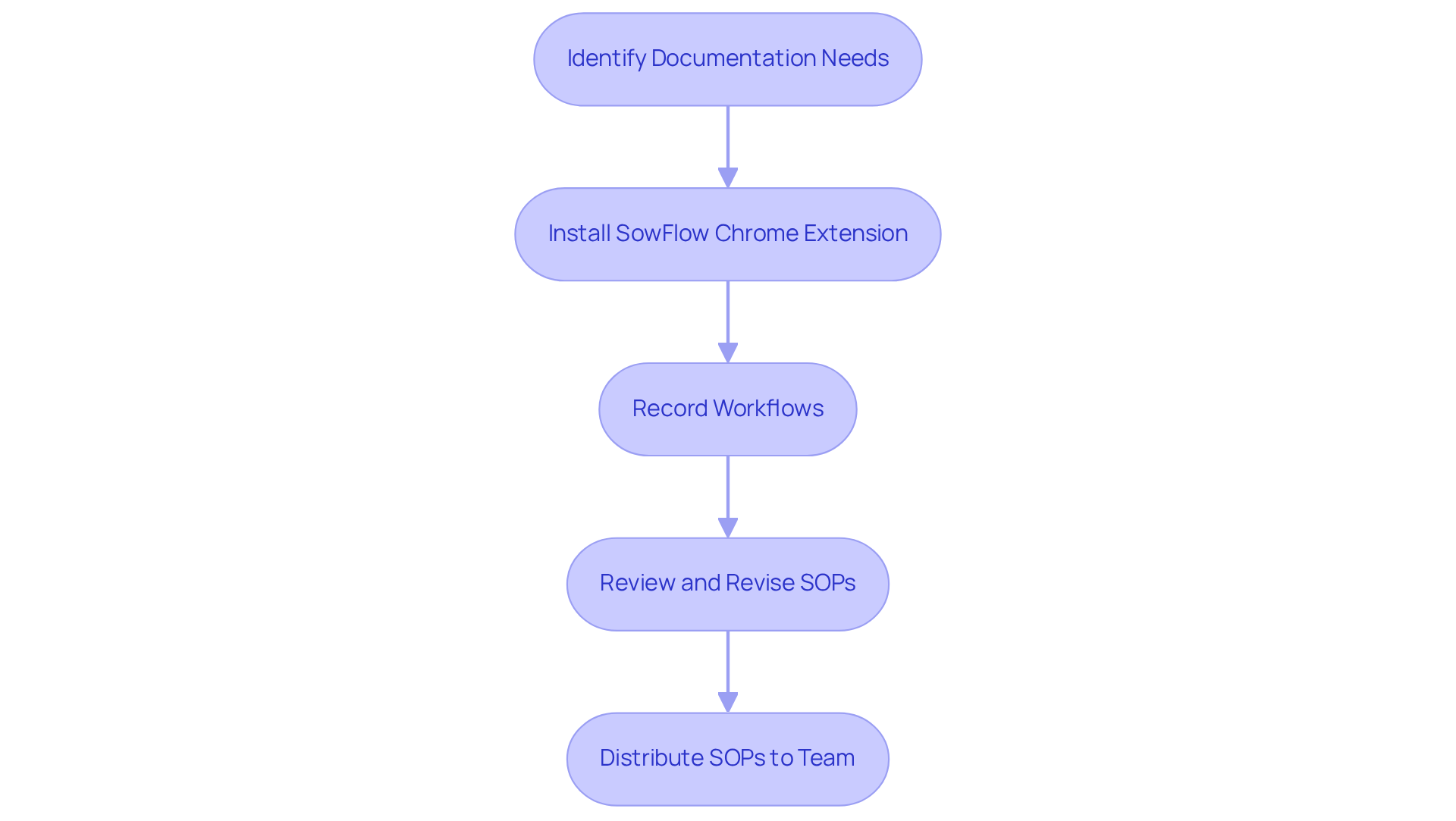
Asana: Comprehensive Process Documentation Tools
You might be wondering how to keep your team on the same page when it comes to a procedure document example for process documentation. Well, Asana has got you covered! It offers a powerful set of tools that make it super easy to create detailed task lists, assign responsibilities, and track progress in real-time. This means everyone in your group can stay aligned on their tasks, which really helps foster a culture of accountability and clarity.
Speaking of clarity, Asana’s collaborative features take communication to the next level. You can easily share input and feedback on the procedure document example, making it simple to keep everyone in the loop. Did you know that studies show full-time workers often spend over half their time on administrative tasks? In fact, a whopping 60% of a person’s work time is spent on “work about work.” By centralizing task management, Asana not only streamlines operations but also lets your team focus on what really matters, driving productivity and engagement.
Organizations that have embraced Asana’s capabilities have seen some impressive improvements in task alignment and operational efficiency. As Peter Drucker wisely said, "Until we can manage time, we can manage nothing else." This really highlights how crucial effective task management is for achieving success in any organization. So, if you’re an operations manager looking to boost collaboration and simplify record-keeping, why not consider weaving Asana’s tools into your daily routine? It could make a world of difference!
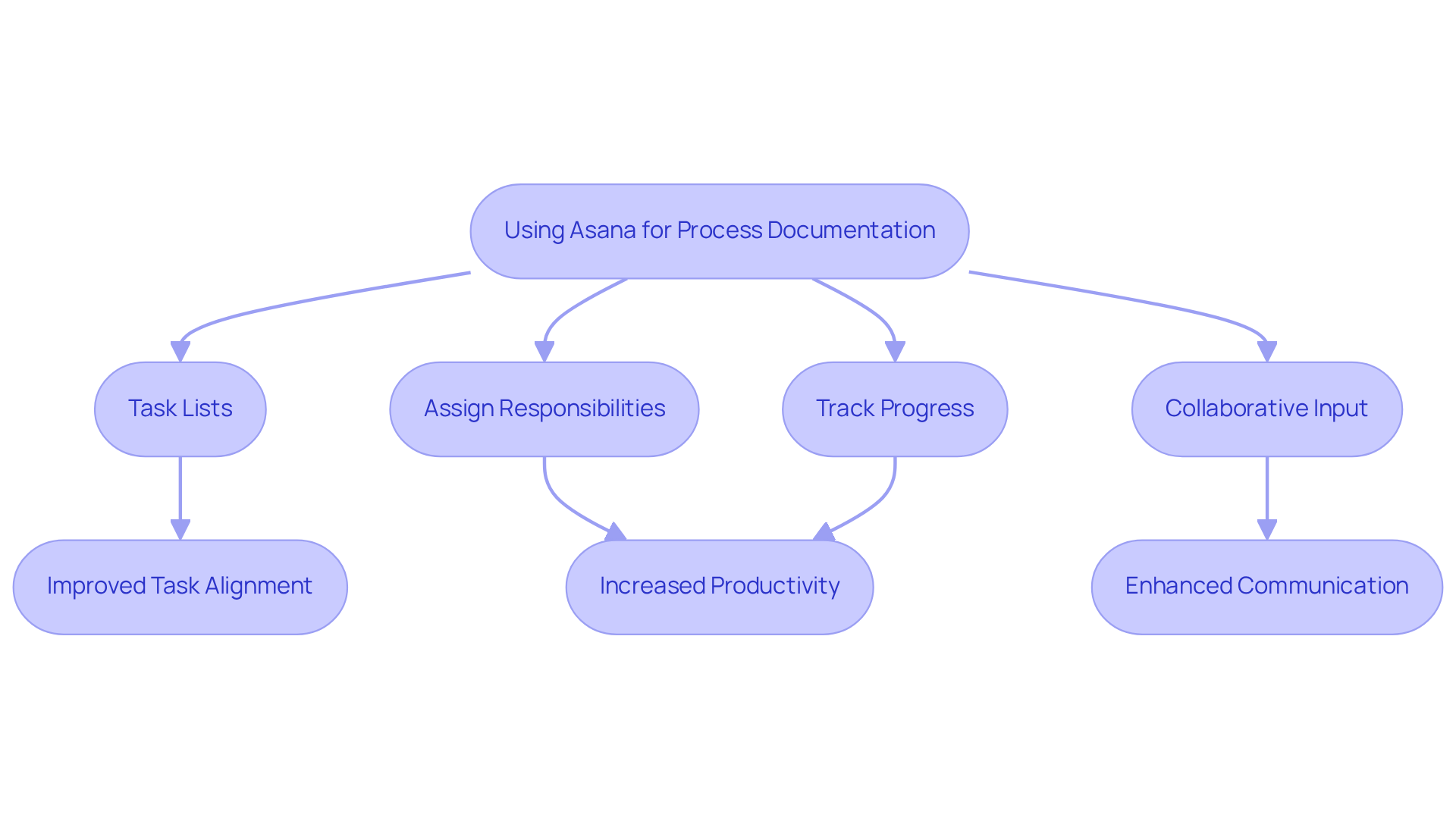
Document360: Structured Documentation for Operational Efficiency
You might be wondering how to keep your team's knowledge organized and accessible. Well, that’s where SowFlow comes in! This platform offers a solid structure for records, allowing organizations to create a centralized knowledge base that everyone can easily access. With its version control features, you can be sure that your team is always working with the latest information—super important for keeping things accurate and consistent.
Now, let’s think about this: employees often waste around 12 hours a week just searching for internal info that’s already out there. That’s a lot of time lost! By organizing records systematically, SowFlow helps cut down on confusion and mistakes, which means your operations run smoother and more efficiently. Nimrod Kramer puts it nicely: "Version control assists groups in improving their work on documents." This really highlights how effective version control can boost collaboration and keep teams on track with shared documents.
Speaking of efficiency, this structured approach not only streamlines workflows but also helps teams tackle challenges more effectively. The results? Better outcomes across the board! Plus, companies like Comgate have seen a significant drop in support calls after implementing structured record-keeping methods. It’s clear that using records efficiently has some real, tangible benefits. So, why not explore how SowFlow can help your team thrive?
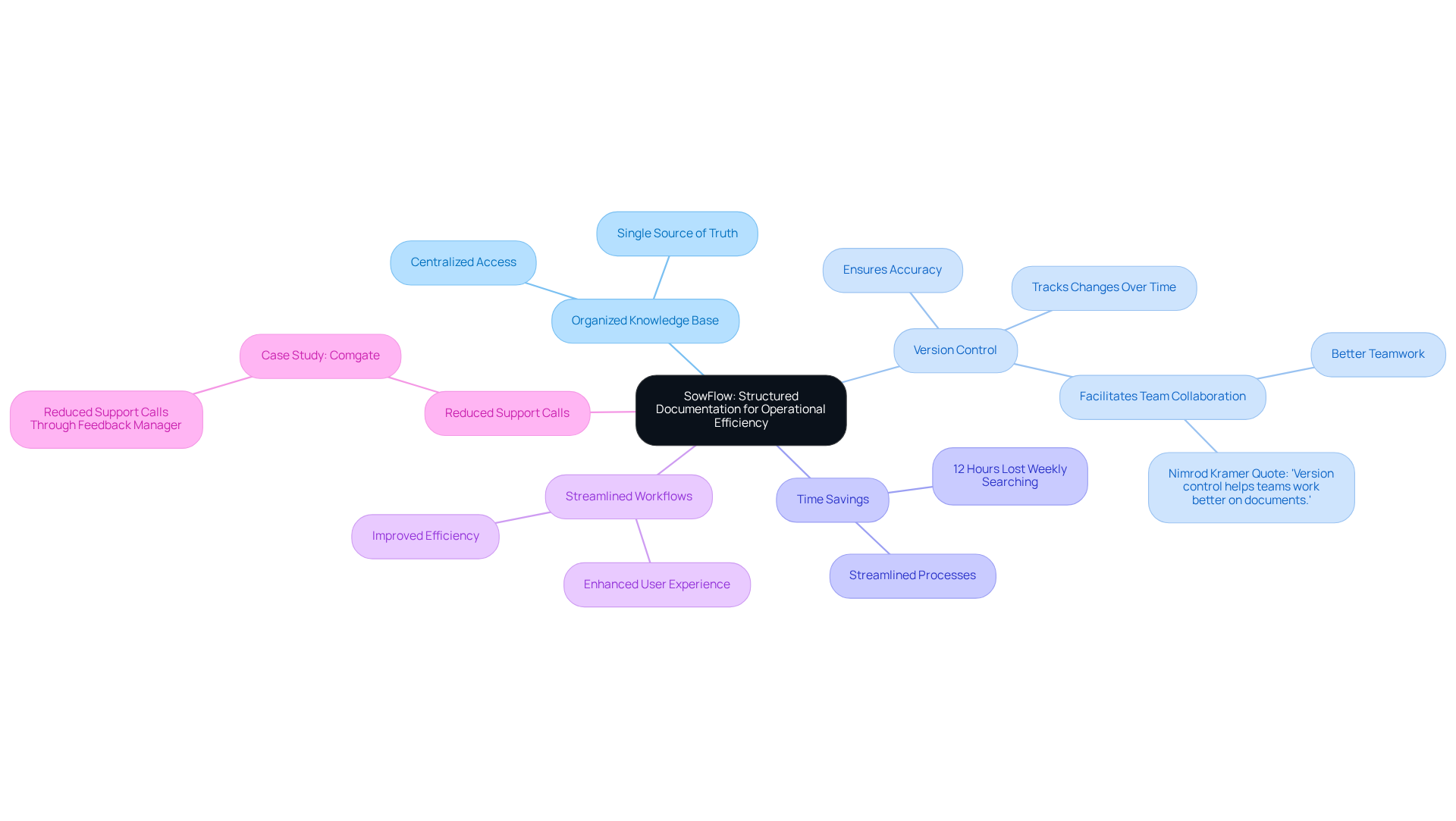
Helpjuice: Knowledge Management for Effective SOPs
You might be wondering how to make knowledge management a breeze. Well, Helpjuice is here to help! It’s designed to simplify the development and upkeep of standard operating practices, serving as a procedure document example to help teams like yours stay organized. With customizable templates, you can tailor your procedure document example to fit your specific needs, thereby boosting the quality and relevance of your SOPs.
Now, let’s talk about search capabilities. With Helpjuice, you can quickly find and use essential information, which encourages a culture of knowledge sharing. Imagine having critical insights at your fingertips, ready for all team members to access. This not only streamlines operations but also improves overall efficiency. Companies using Helpjuice have seen some impressive results in their record-keeping processes.
For example, Otelier experienced a whopping 200% increase in visits and a 75% boost in page retention after implementing Helpjuice. That’s a clear win for effective knowledge management tools! And it doesn’t stop there—companies like Auger have reported a 25% decrease in onboarding time for new agents, showcasing how Helpjuice can really enhance operational efficiency.
As we look ahead to 2025, the focus on customizable templates, powerful search features, and user-friendly interfaces will keep shaping the SOP creation landscape. Tools like Helpjuice are becoming essential for organizations that want to ramp up their operational efficiency. So, why not explore how it can work for you?
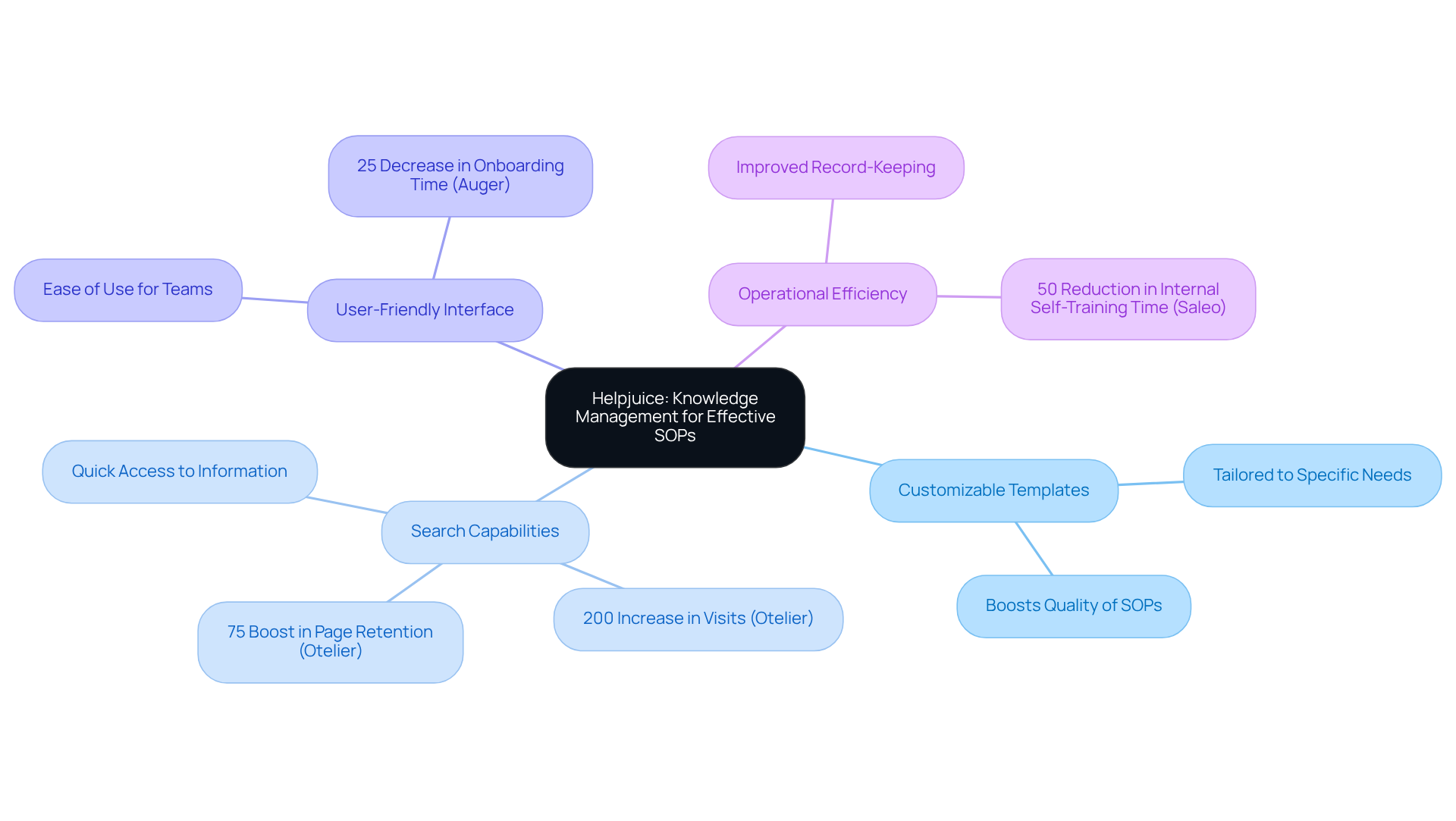
Atlassian: Collaborative Tools for Enhanced Documentation
You might be wondering how Atlassian's collection of collaborative tools can really make a difference in record-keeping for your team. Well, let’s talk about Confluence! This tool shines by allowing multiple users to edit documents at the same time, which means real-time collaboration is a breeze. Not only does this boost the quality of your records, but it also gives everyone a sense of ownership. When team members feel involved, you end up with more accurate and detailed procedure document examples.
Imagine being able to tackle discrepancies on the spot! With real-time editing, teams can ensure that every contribution flows smoothly into the final document. This leads to a noticeable improvement in record precision and relevance—something that’s crucial for keeping your operations running efficiently. Plus, teams using Confluence have reported feeling more engaged and productive. Why? Because that collaborative vibe encourages everyone to jump in and cuts down on the time spent revising. By harnessing these features, businesses can streamline their record-keeping, as demonstrated in the procedure document example, leading to higher quality and consistency.
Now, let’s dive into some stats to really drive this home. Did you know that 90% of respondents link workplace failures to poor collaboration? That really highlights how important teamwork is in keeping your records straight. And here’s another one: 73% of employees who work collaboratively say their performance improves. Tools like Confluence are definitely making a difference! One study even found that "83% of workers say they have a good understanding of the status of their projects when they primarily use a project management tool to communicate."
So, if you’re an operations manager looking to up your record quality game, Confluence’s real-time editing features could be just what you need. By fostering team cooperation and providing a space for quick feedback, you can ensure your records stay accurate and relevant. In the end, that means better operational efficiency for your business!
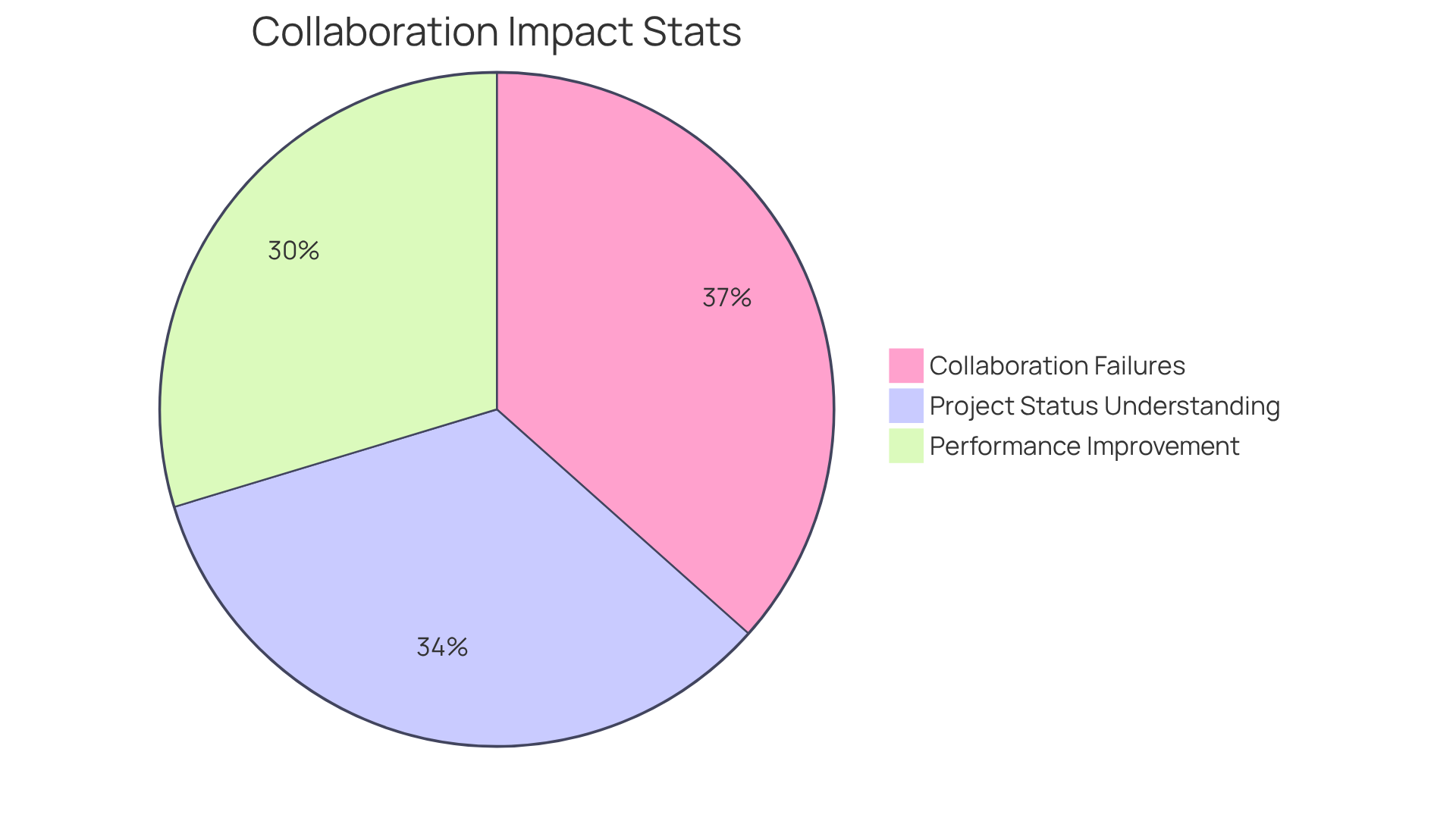
ScribeHow: Best Practices for Effective Process Documentation
You know, having an effective procedure document example is super important for organizations that want to streamline operations and boost productivity. So, what are some key guidelines for creating impactful procedure document examples for Standard Operating Procedures (SOPs) in 2025? Let’s dive in!
-
Use Simple Language: Clarity is key! SOPs should be written in clear, straightforward language to avoid any mix-ups. This way, everyone on the team can follow the procedures without scratching their heads in confusion.
-
Incorporate Visuals: Ever noticed how visuals like flowcharts and diagrams can make things so much clearer? Research shows that using visuals can improve task execution effectiveness by up to 323% compared to just text. Take Dropbox’s customer support team, for instance; they use annotated visuals in their SOPs, helping new employees grasp complex processes much faster.
-
Structure Documents Logically: A well-organized SOP makes it easy to navigate and understand. Start with an overview and then move through the detailed steps. This logical flow helps employees understand the context and importance of each procedure document example.
-
Engage Employees in the Drafting Process: You might be wondering why it’s important to involve team members in creating SOPs. Well, when those who actually do the tasks help draft the procedure document example, it ensures both accuracy and practicality. Plus, it fosters a sense of ownership, leading to better buy-in and adherence.
-
Regularly Review and Update Procedures: Continuous improvement is a must! Organizations should set up a system for regular reviews and updates to keep SOPs relevant as processes change. This not only keeps things compliant but also boosts operational efficiency.
Now, let’s talk about SowFlow. It gives teams immediate access to documentation, making it a breeze to create and update SOPs. By using SowFlow's solutions, companies can streamline process standardization, onboarding, and knowledge sharing, ultimately enhancing team efficiency. For example, Southwest Airlines uses digital SOP management systems to ensure all employees have the latest procedures at their fingertips, reducing errors and improving compliance.
By embracing these best practices and leveraging SowFlow's features, organizations can create a procedure document example that not only guides team members effectively but also fosters a culture of clarity and accountability. So, what do you think? Ready to take your documentation to the next level?
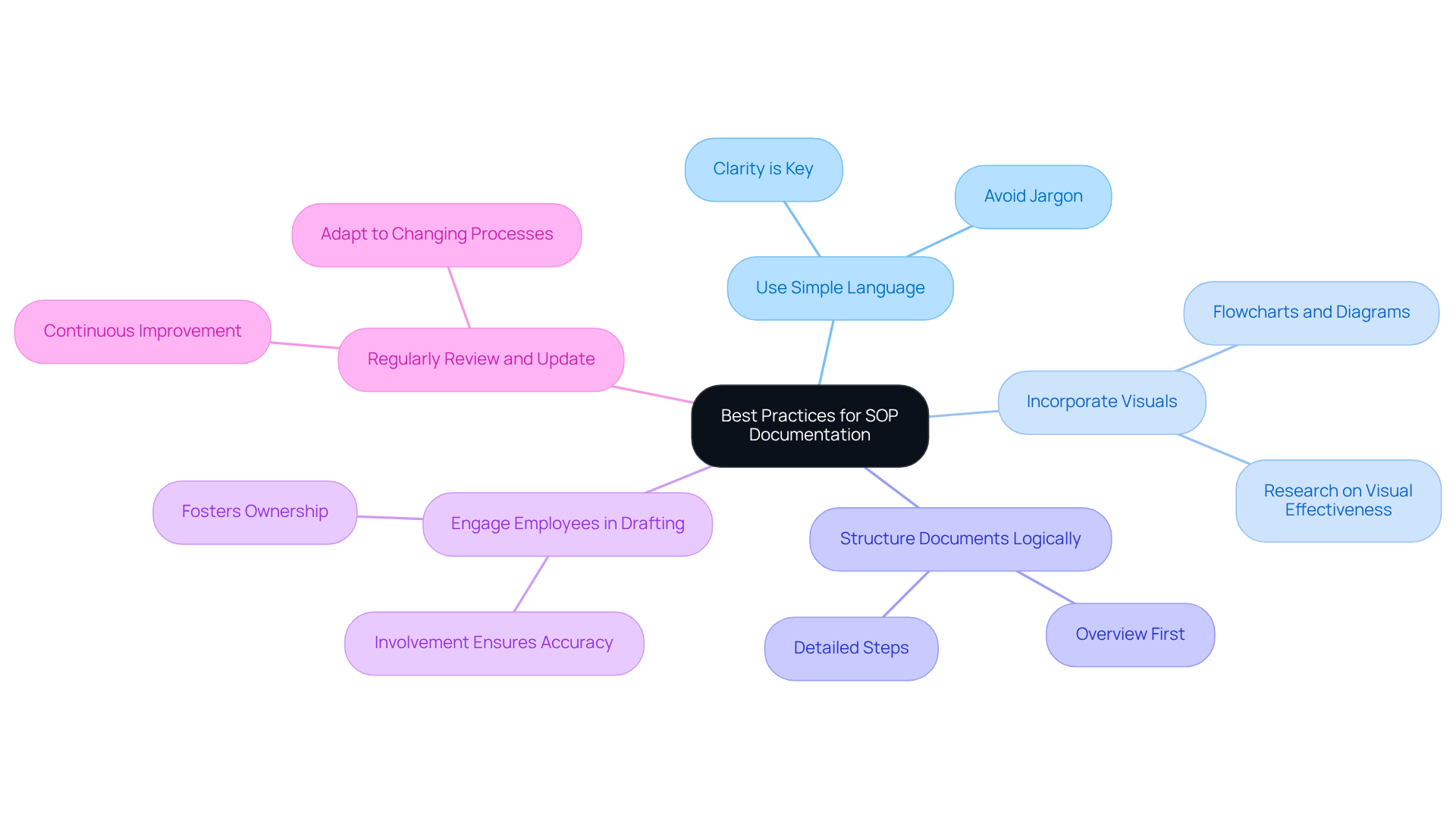
SweetProcess: Simplified Procedure Writing for Teams
You might be wondering how to create an easier procedure document example for your team. Well, SweetProcess is here to help! It’s designed to simplify the whole procedure writing process, featuring an intuitive interface that lets you create, edit, and share a procedure document example effortlessly. This simplicity means you won’t need extensive training, which is great because it encourages everyone in your group to document their processes regularly.
Imagine being able to keep your knowledge base current and thorough without taking time away from your main tasks. That’s exactly what SweetProcess does! By cutting down on the complexities of record-keeping, it allows your team to focus on what really matters while still ensuring that high-quality procedure document examples are created. Users have shared that the ease of use really boosts their engagement, leading to a more collaborative and efficient workflow.
Speaking of efficiency, did you know that companies that actively involve their employees in the SOP creation process see a 30% drop in resistance? That’s a big deal! It highlights just how important user-friendly tools like SweetProcess can be. Plus, organizations that have embraced effective SOP software report saving around 20 hours a week in process management. That’s a lot of time you could be spending on other important tasks! So, why not explore how SweetProcess can make your documentation process smoother?
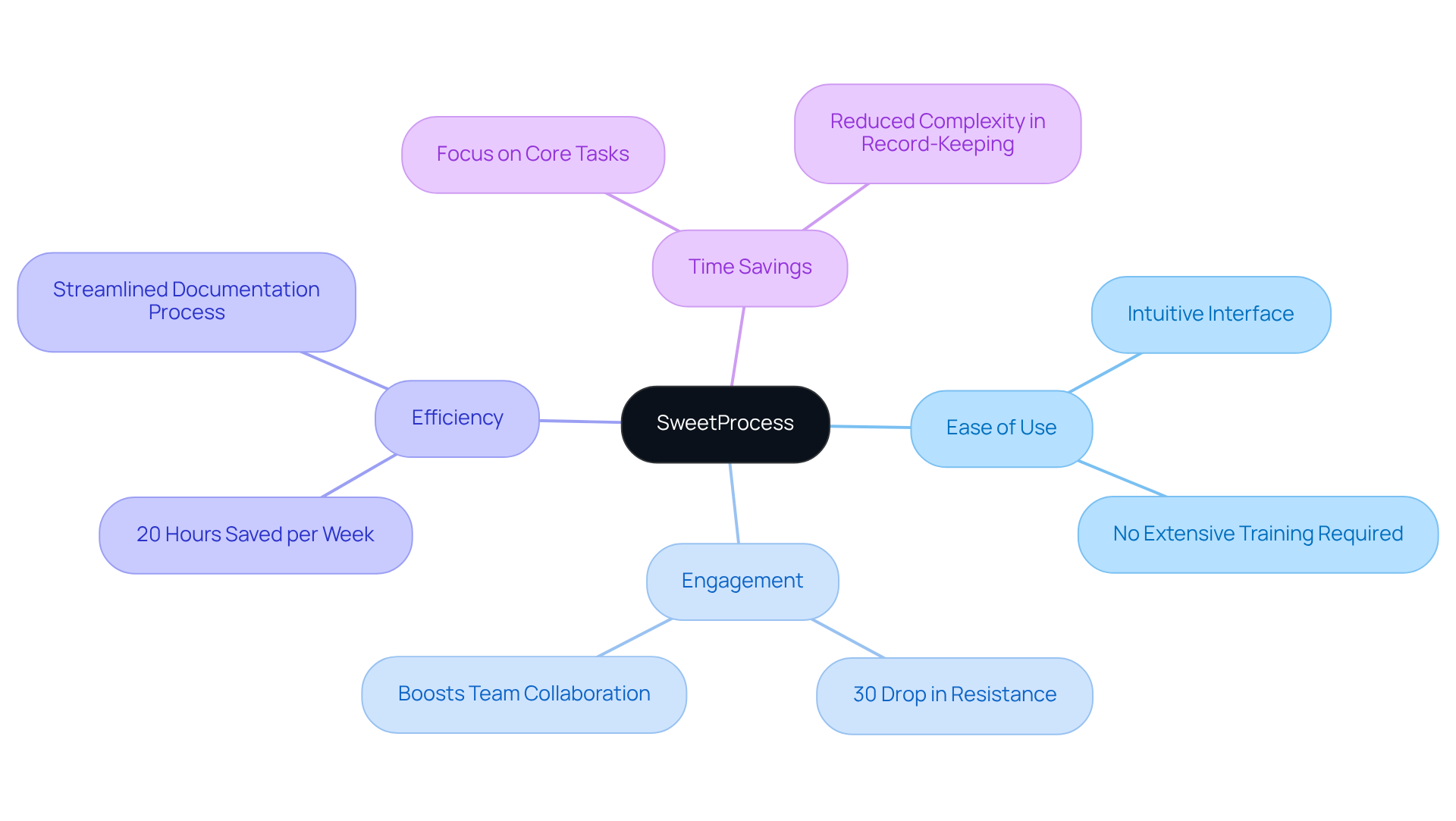
Indeed: SOP Examples for Standardization
You might be wondering how to make your documentation efforts more effective. Well, Indeed has got your back! They provide a variety of procedure document examples that companies can utilize as templates. These procedure document examples span different industries and functions, providing you with great insights into how to structure your own SOPs. By checking these out, you can find the best ways to standardize your processes, making sure everything is clear and easy to follow across your organization.
Now, let’s dive into how SowFlow can make your life even easier. With its instant record-keeping solution, creating and updating user guides is a breeze! This means your team can streamline process standardization, improve onboarding, and share knowledge more effectively. In a fast-paced business world, keeping your documentation relevant and efficient is key, and SowFlow helps you do just that. So, why not explore these tools and see how they can transform your documentation game?
The FDA Group: Guidelines for Writing Effective SOPs
You might be wondering how to craft effective Standard Operating Procedures (SOPs) using a procedure document example that really works. Well, the FDA Group has some essential guidelines that can help! They emphasize clarity, consistency, and compliance as the backbone of any good SOP. Think of these guidelines as your roadmap in regulated sectors, ensuring your SOPs not only meet regulatory standards but also boost your operational efficiency.
By following the procedure document example, teams can cut down on errors and ramp up compliance. In fact, organizations that have rolled out solid SOP programs saw a whopping 68% improvement in compliance rates! That’s a clear win for structured documentation. Plus, clarity in your SOPs can really help reduce human error, which is a big culprit in compliance failures—73% of data breaches involve the human element, after all.
And it gets better! Companies with strong SOP programs have reported a 25-30% drop in audit findings. That’s pretty impressive, right? As regulations keep changing, maintaining a clear and consistent procedure document example is more important than ever for navigating those compliance hurdles. Speaking of making things easier, SowFlow steps in to streamline this process. It allows teams to share files in a snap, ensuring everyone has quick access to the right documents. This immediate access not only simplifies onboarding but also enhances knowledge sharing, leading to improved efficiency all around.
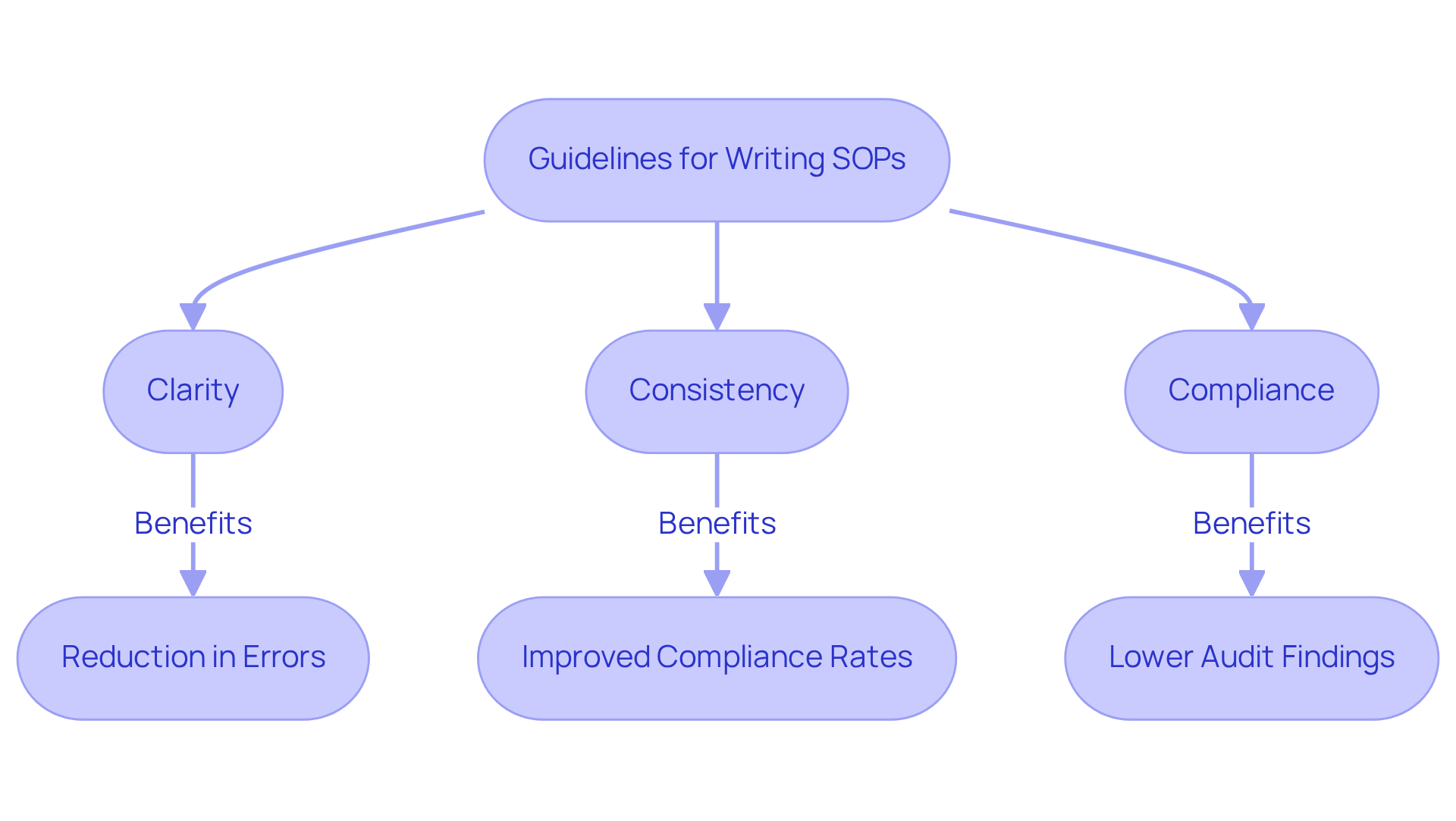
Importance of Procedure Documentation in Streamlining Operations
You might be wondering why a procedure document example is considered such a big deal for any organization. Well, let me tell you—they're essential for making operations smoother and more efficient. When processes are clearly defined, teams can cut down on confusion and minimize errors, which means everyone knows exactly what they need to do. For instance, organizations that keep their records organized have seen a whopping 47% boost in productivity thanks to streamlined workflows.
Now, think about training and onboarding new employees. Efficient record-keeping plays a crucial role here, too! It helps newcomers quickly grasp their roles and responsibilities. In fact, structured onboarding programs can improve employee retention by 58% over three years. That’s a huge win for any team!
Ultimately, having a procedure document example that is well-documented doesn’t just lead to better efficiency and compliance; it also builds a culture of accountability and clarity. This, in turn, enhances overall organizational performance. As the saying goes, "If you didn’t document it, it didn’t happen." This really highlights how important thorough documentation is for keeping everything running smoothly.
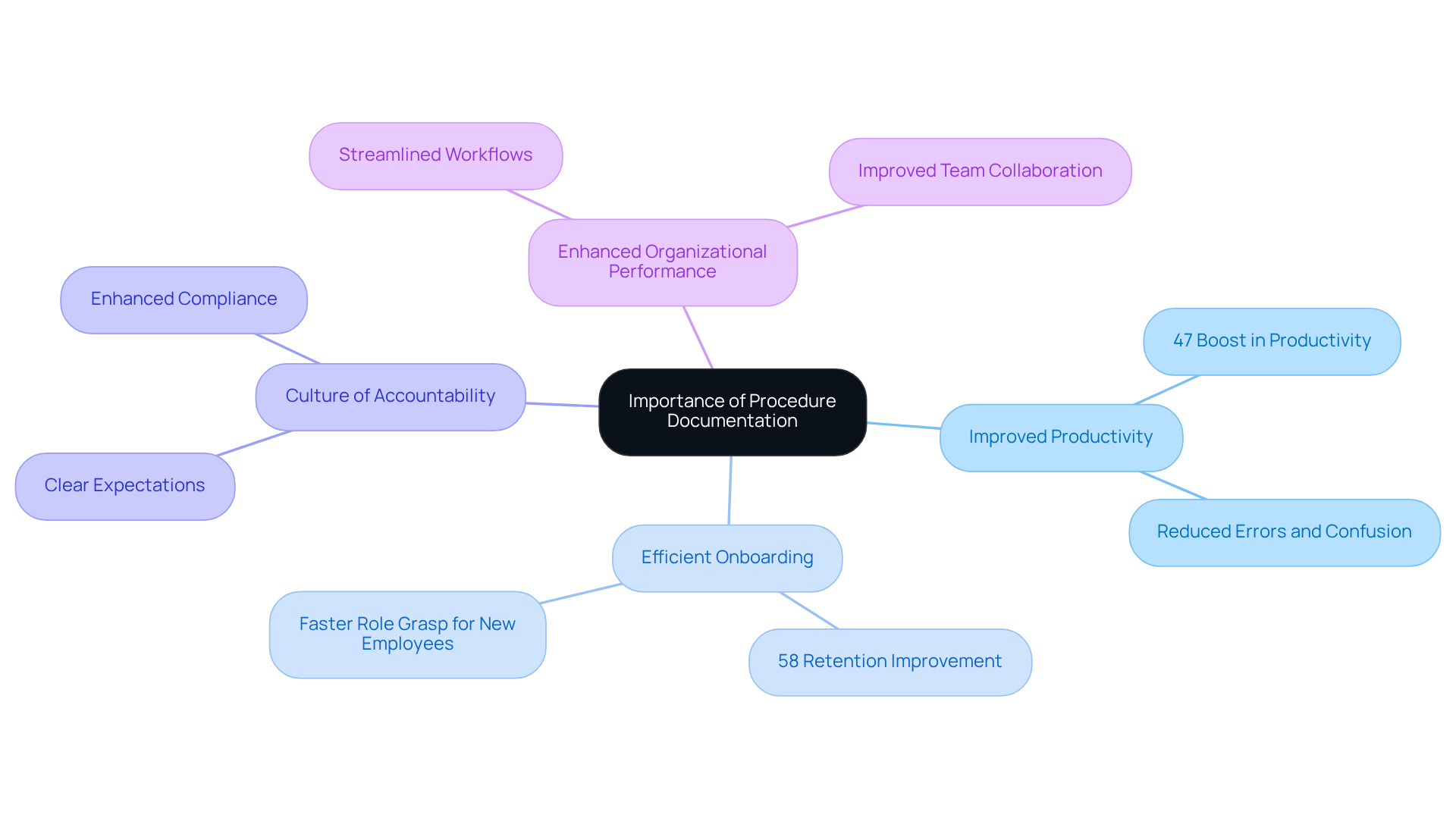
Conclusion
You know, procedure documents are pretty crucial for boosting operational efficiency in organizations. By clearly laying out processes, these documents help cut down on confusion and errors, making sure everyone knows their roles and responsibilities. It’s interesting to note that effective procedure documentation doesn’t just streamline workflows; it can actually ramp up productivity, with some companies seeing increases of up to 47%!
So, what are the key takeaways from the article? Well, it highlights a bunch of tools and best practices for crafting impactful procedure documents. Platforms like SowFlow, Asana, Document360, Helpjuice, and Atlassian each bring something unique to the table, simplifying the documentation process. They allow teams to collaborate in real-time, keep organized records, and ensure everyone has access to the latest info. Plus, getting employees involved in the drafting process and regularly reviewing SOPs is super important. These practices lead to better adherence and can really cut down onboarding times.
In wrapping things up, investing in solid procedure documentation isn’t just about ticking boxes for compliance; it’s about fostering a culture of accountability and clarity within teams. Organizations that make efficient documentation a priority are likely to see better performance, improved employee retention, and a more engaged workforce. So, why not embrace the tools and strategies discussed in the article? They can really help smooth out operations and create a more productive environment. The time to streamline your documentation processes is now—let’s explore these solutions and see how they can transform your organization!
Frequently Asked Questions
What is SowFlow and how does it help with documentation?
SowFlow is a tool that allows users to create Standard Operating Procedures (SOPs) quickly and efficiently. It features a user-friendly Chrome extension that enables teams to record workflows directly from their browser, significantly reducing the time spent on documentation.
What are the benefits of using SowFlow for organizations?
Organizations using SowFlow have experienced improved record-keeping practices, leading to smoother operations and increased access to essential information. Some companies have reported up to a 30% reduction in training time for new hires due to the streamlined documentation process.
How does Asana assist with process documentation?
Asana provides a comprehensive set of tools for creating detailed task lists, assigning responsibilities, and tracking progress in real-time. This helps teams stay aligned and fosters a culture of accountability and clarity.
What are the advantages of using Asana for task management?
By centralizing task management, Asana streamlines operations and allows teams to focus on essential tasks rather than administrative work. This can lead to improved productivity and engagement within the organization.
How does Document360 contribute to operational efficiency?
Document360 helps organizations organize their knowledge systematically, creating a centralized knowledge base that is easily accessible. Its version control features ensure that teams are always working with the latest information, reducing confusion and mistakes.
What impact does structured documentation have on employee productivity?
Structured documentation helps cut down the time employees spend searching for information, which can be as much as 12 hours a week. By organizing records effectively, teams can operate more smoothly and efficiently, leading to better outcomes.
Can you provide an example of a company that benefited from structured record-keeping?
Companies like Comgate have reported a significant drop in support calls after implementing structured record-keeping methods, highlighting the tangible benefits of efficient documentation.
👍
What others are liking
5 Steps to outline your ideal documentation structure
5 MINS READ
Where to start the your journey of mapping out your ideal documentation structure, aligning it with the very heartbeat of your organization?
Defining a winning level of detail in your process
3 MINS READ
What is too much detail, and what is too little? This article described in that winning level detail about what detail is enough.





